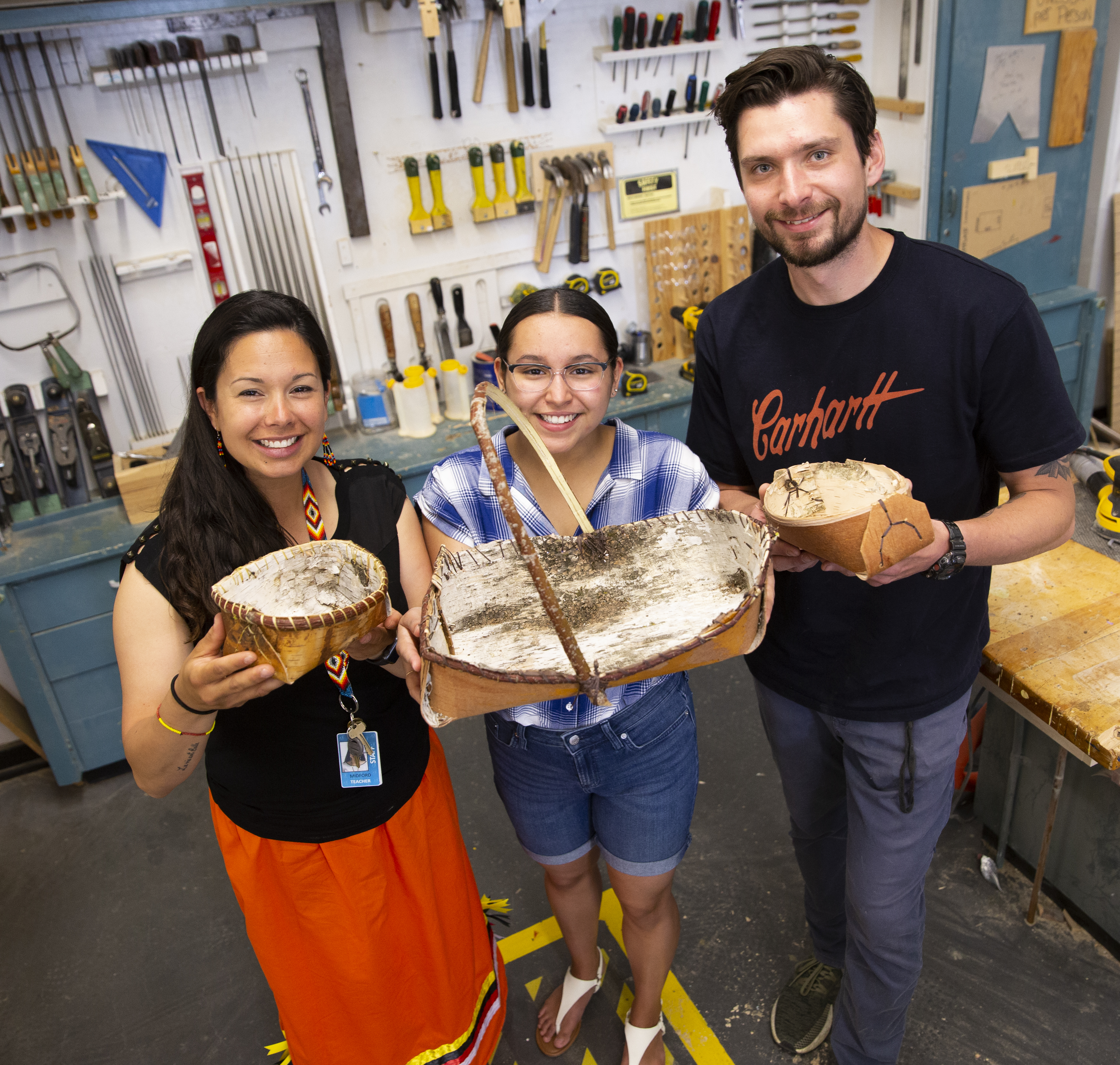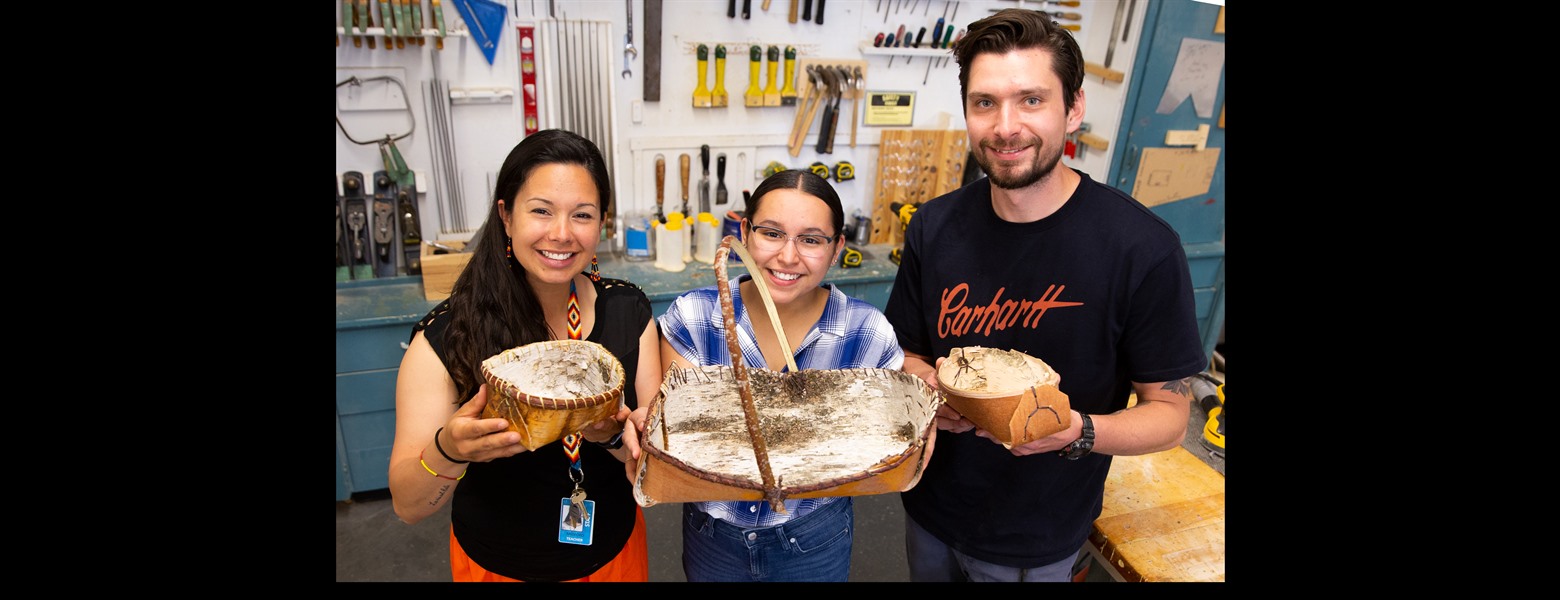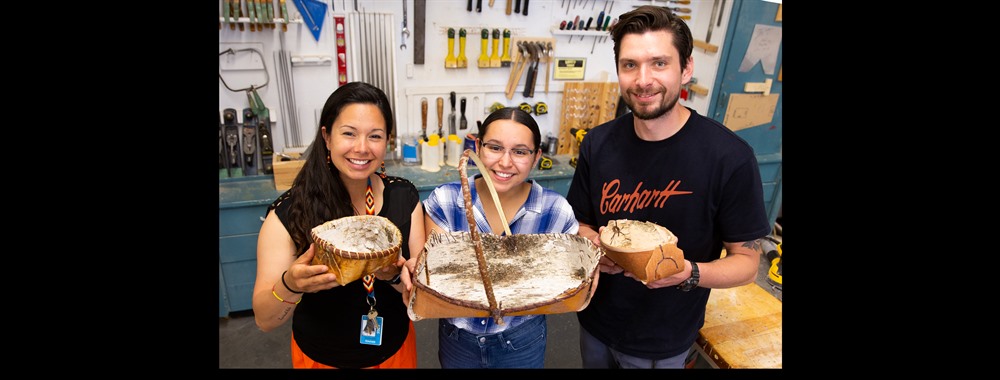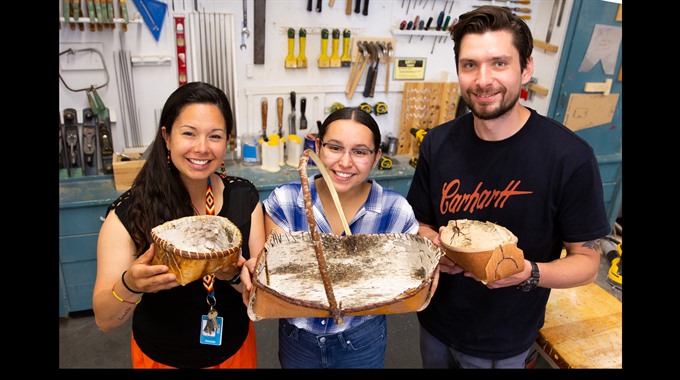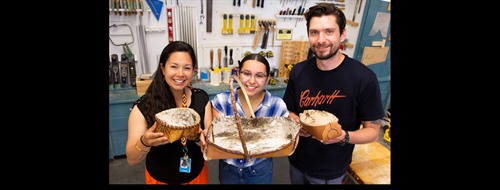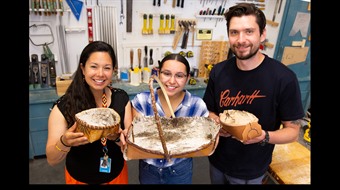St. John's students connect over traditional birch bark harvest
February 8, 2021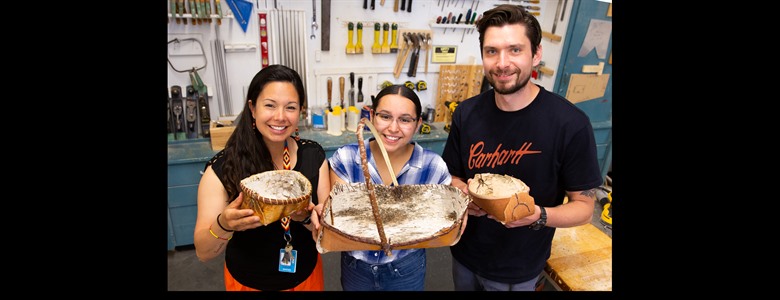
A group of St. John's High School students recently had the opportunity to learn a centuries-old tradition in the great outdoors.
Indigenous Graduation Coach Stephanie Midford and woodworking teacher Aaron Cyr worked on a project that had students harvesting and handcrafting with birch bark, otherwise known as wiigwaas in Ojibwe.
Through a project funded by WSD's Children's Heritage Fund, students travelled out of town to meet at the lodge of Indigenous Knowledge Keeper Vern Dano.

Photo courtesy of St. John's High School
"It was a two-day process—the first day we took students out to Mar Sand Hills and Vern showed us how to properly and respectfully harvest the birch tree," Ms. Midford said. "He shared how Indigenous people traditionally used the birch tree to help make canoes and other items. They said the end of May, beginning of June is the best time to harvest birch."
The bark harvesting process is a careful one. Incisions are made on the tree to allow safe removal without cutting the tree's membrane. Harvesters take care to only remove a small amount from each tree, and they are given time to heal before further harvesting is done.
"It was peaceful in the woods and nice to learn out there," said student Paris Collins. "Vern showed us how to harvest the bark and what trees you can harvest from. As long as you as you don't cut into that membrane and peel it, the tree is able to repair itself. Eventually that yellow-hued bark will turn black. If you want to go back in several years, you can harvest it again."
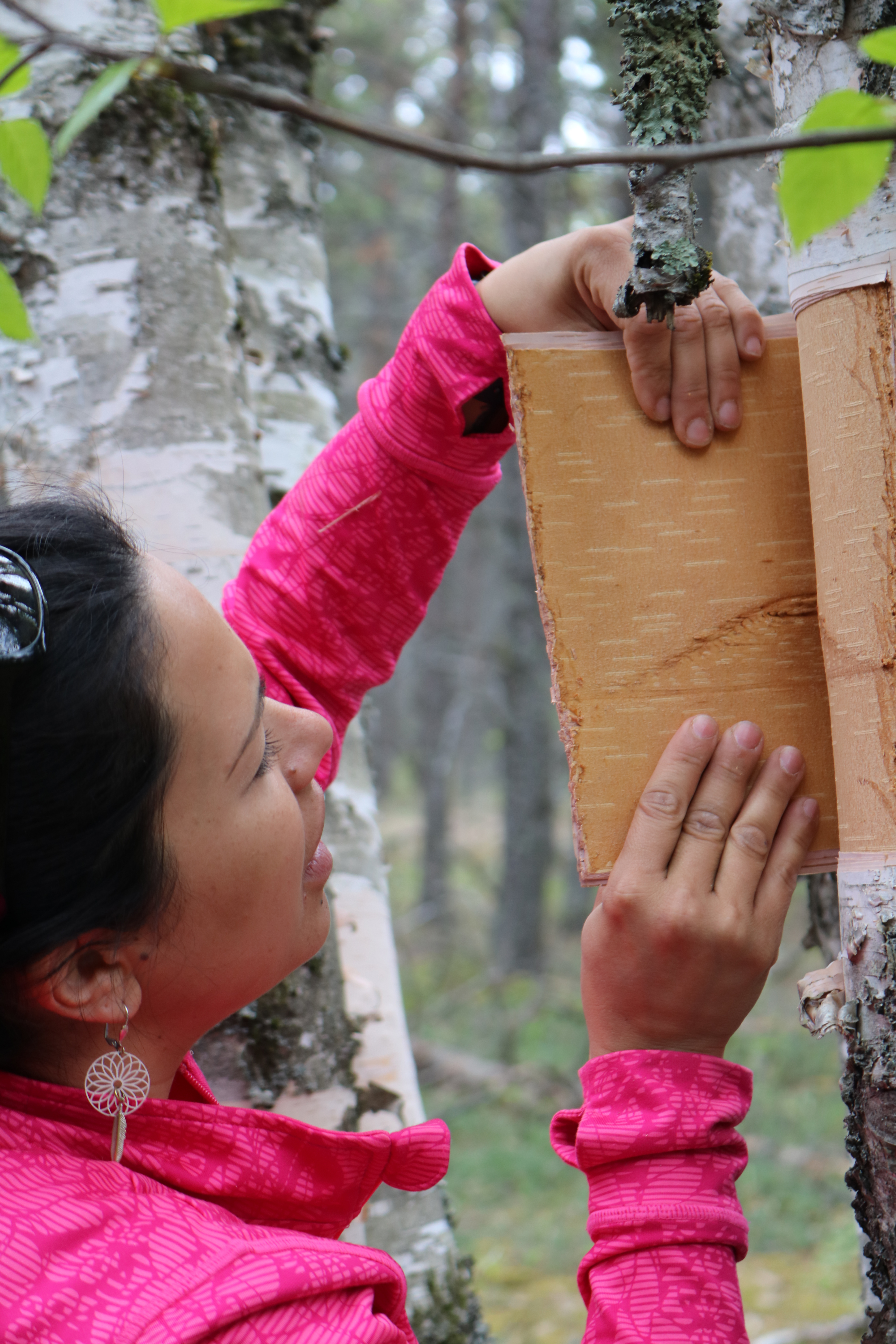
Photo courtesy of St. John's High School
Paris, who has Métis heritage, added that the entire process came very naturally to her.
"I'm a former cadet and we were always out in the bush and finding other uses for pieces of nature," she said. "You can use nature to build shelter, places to keep your food and other things."
The following day, students gathered in Mr. Cyr's woodworking class to get special instruction on how to craft the birch bark sheets into baskets and other goods. Indigenous Knowledge Keeper Jaime Hoover visited the class to show students how to work the bark.
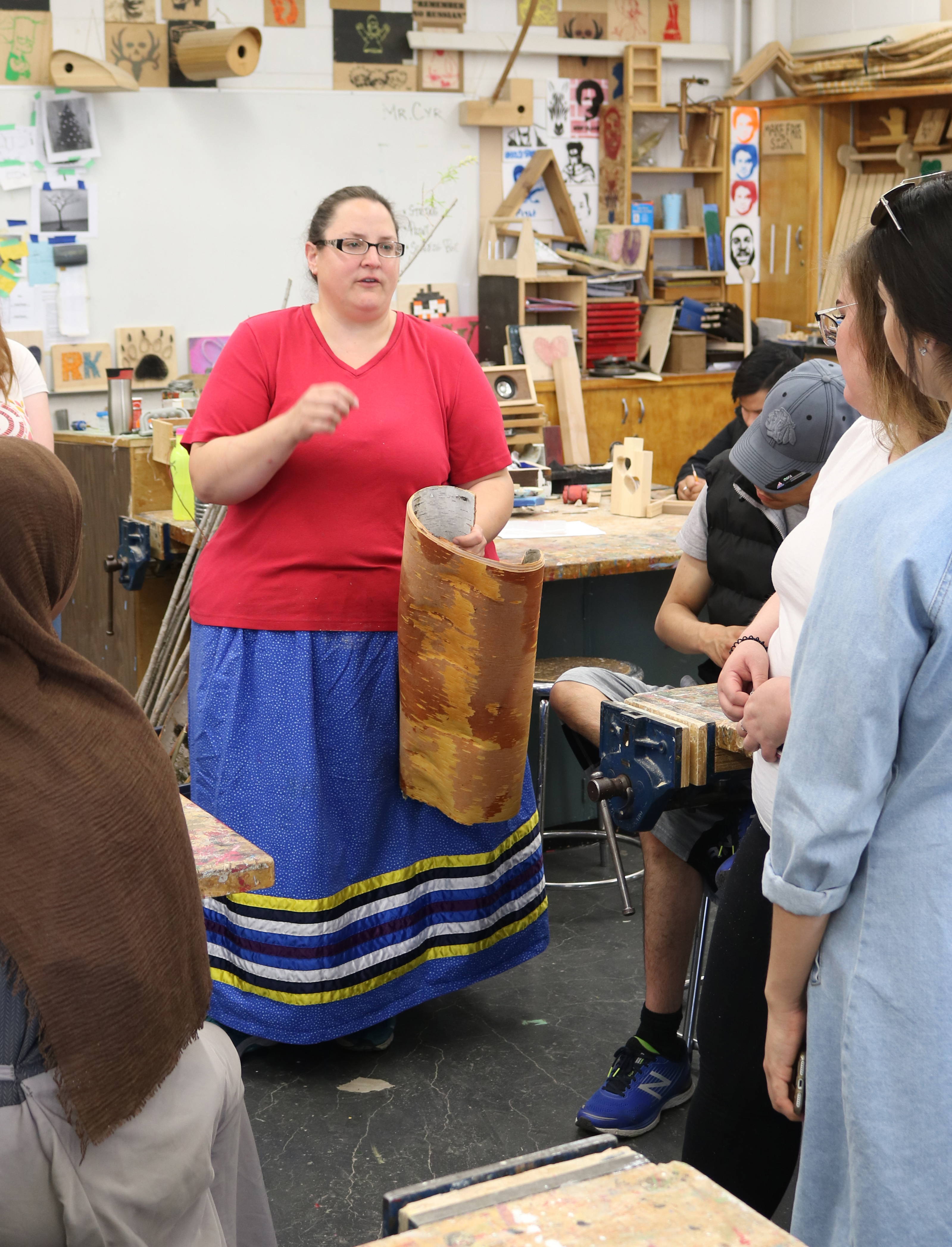
Photo courtesy of St. John's High School
"Jamie had taken the harvested bark home to soak, so it was more manageable for students to work with," Ms. Midford said. "They sewed the baskets with artificial sinew and used willow branches to make the handles and frames."
Paris said there was a sense of pride as she and her fellow harvesters were able to show the other students in their class photos from the harvest and explain the process.
"There was a pride in being able to say 'look what I went out and did. We went out and picked it and now we can create something out of nothing,'" Paris said.
Paris said that any students would benefit from more opportunities to learn in the great outdoors.
"You get a better sense of nature…and get a different type of respect for the world around you and the people who came before you."
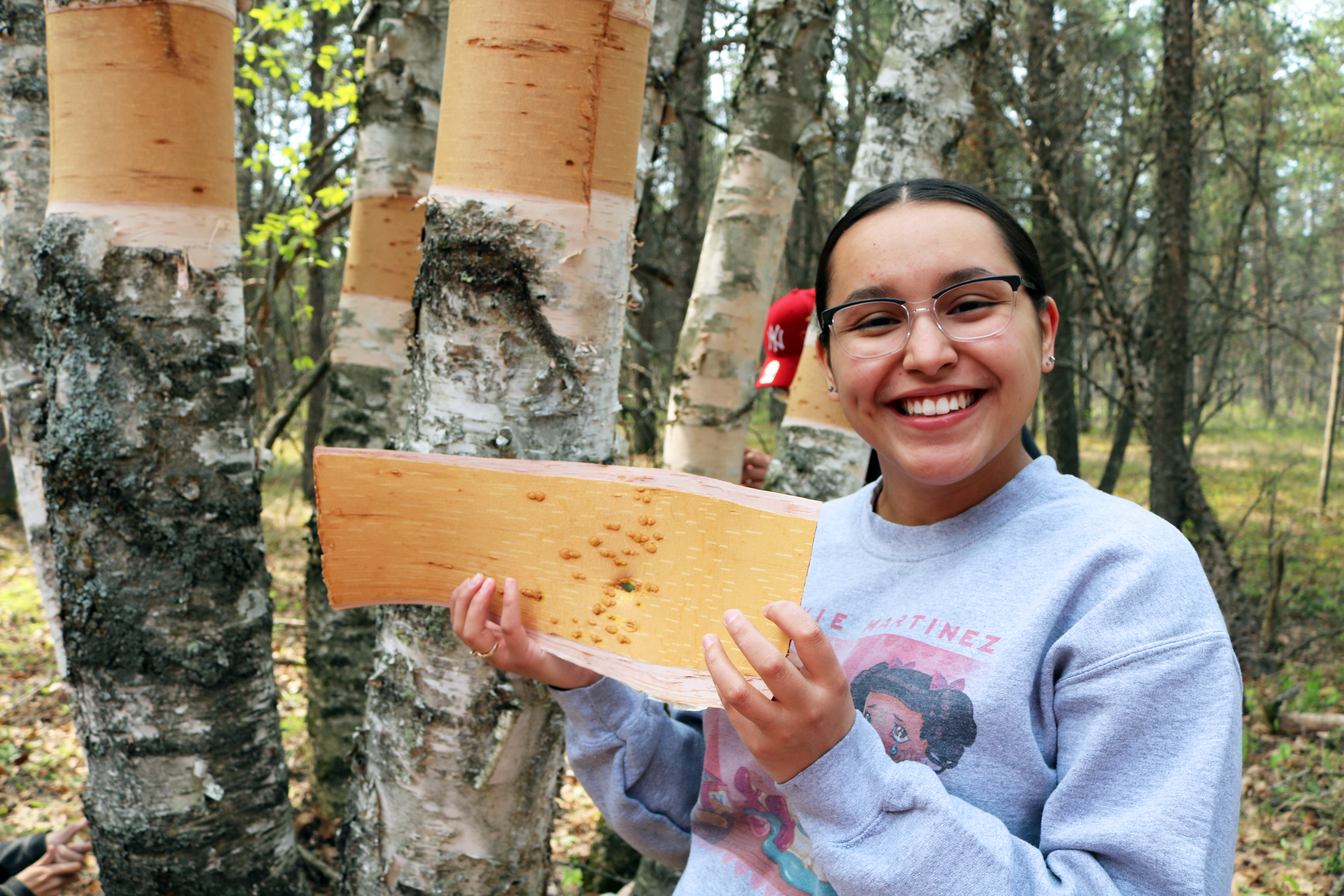
Photo courtesy of St. John's High School
Mr. Cyr said the practise of birch harvesting still makes sense today from a sustainable development standpoint.
"When you think of all the things we buy and just throw out later on, there's something to be said for the sustainability of this—you're harvesting from living trees and making a practical, useful tool," he said, adding that some of the baskets will be kept at the school for students and staff to use for sage gathering and other purposes.
The educators added that they would love to help other schools if they wish to try a similar project with their own students.
"We're available here at St. John's if any of the other schools would like to try it out," Ms. Midford said.
